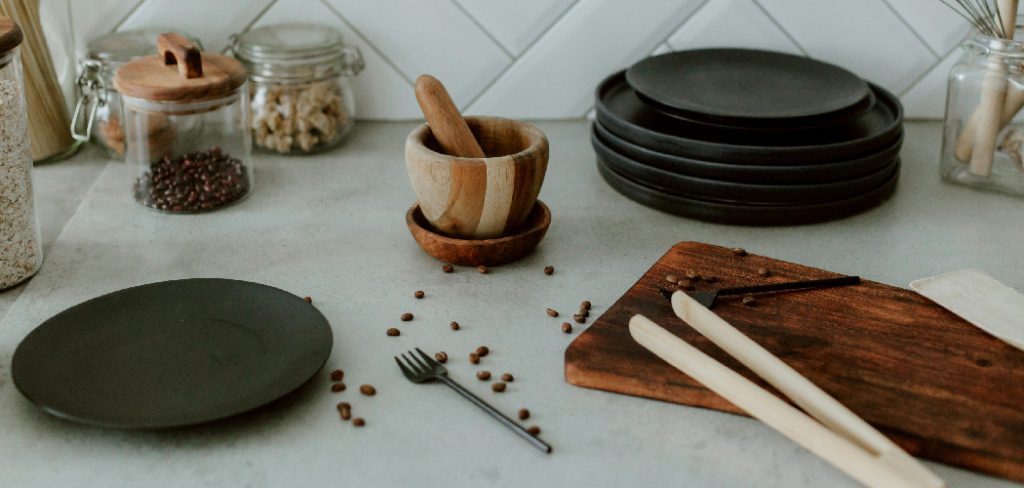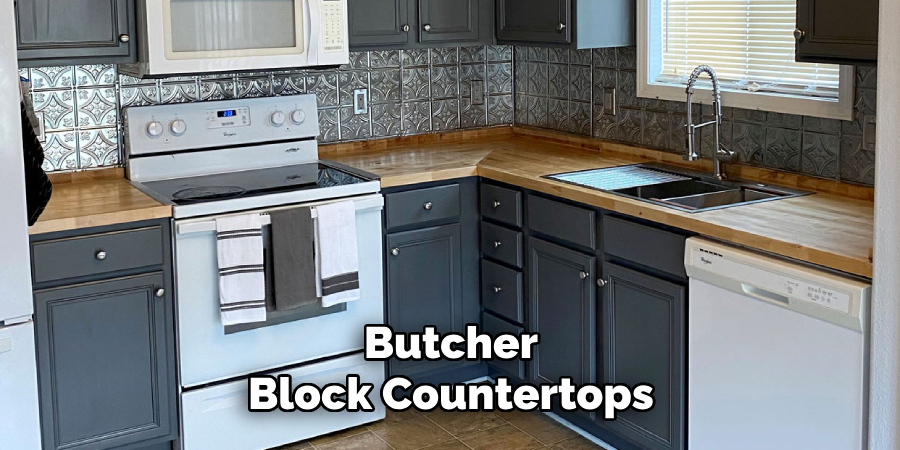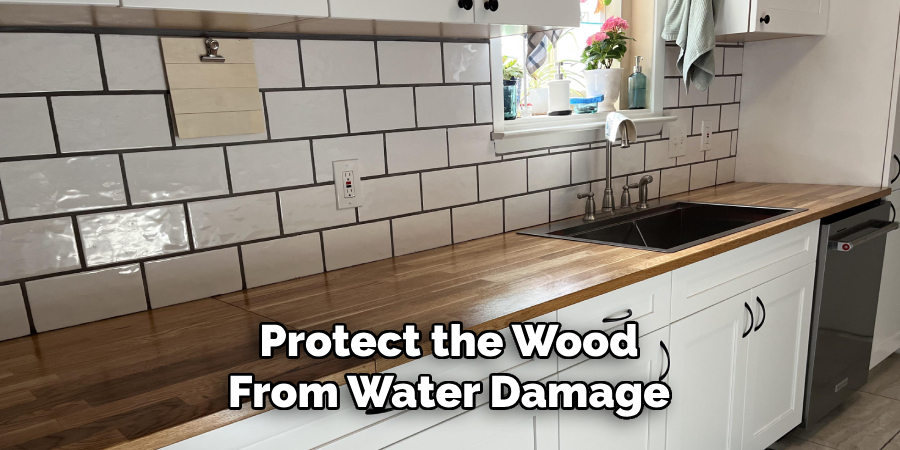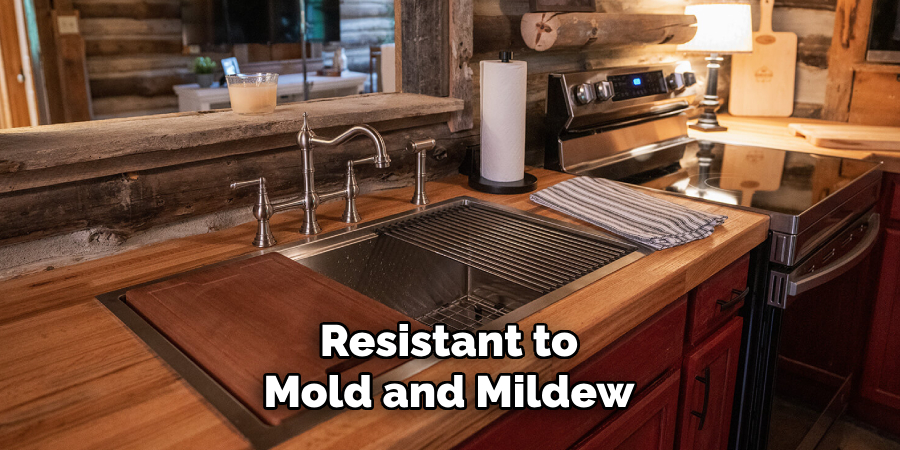Are you tired of seeing your butcher block countertops looking dull and worn? Do you want to give them a new life and make them shine like they did when you first installed them? Look no further, as we have the perfect solution for you – oiling!
Proper maintenance of butcher block countertops is essential to preserve their beauty and functionality. Oiling is a crucial step in this care routine, as it helps protect the wood from water damage, stains, and warping while keeping the surface smooth and rich in appearance.

Whether you’re working with a brand-new countertop or revitalizing an older one, understanding how to oil butcher block countertops will ensure their longevity and keep them looking their best.
This guide will walk you through the steps to oil your countertops effectively and maintain their natural charm.
What Are the Benefits of Oiling Butcher Block Countertops?
Butcher block countertops are popular for their durability, versatility, and natural beauty. These surfaces are made from hardwoods like maple, walnut, cherry, or oak and provide an ideal work surface in the kitchen. However, they require regular maintenance to keep them looking their best. Here are some benefits of oiling butcher block countertops:
- Protects Against Moisture: Oiling creates a barrier on the surface of the wood that repels water and prevents it from seeping into the pores. This protection is especially crucial for butcher block countertops near sinks or other wet areas.
- Prevents Stains: If left untreated, butcher block countertops can develop unsightly stains from spills and food residue. Oiling prevents these stains by sealing the wood and preventing liquids from penetrating it.
- Enhances Appearance: Regular oiling enhances the natural color and grain of the wood, making it look more vibrant. This not only adds to the beauty of your kitchen but also gives a fresh new look to your countertops.
- Increases Durability: By protecting against water damage and stains, oiling helps to extend the lifespan of butcher block countertops. Additionally, regular maintenance can prevent cracking or warping of the wood due to changes in humidity.
Now that you know why oiling is vital for maintaining your butcher block countertops, let’s learn how to do it effectively.
What Will You Need?
Before starting the oiling process, make sure you have these essential tools and materials:
- Food-Grade Mineral Oil: This is the best choice for oiling butcher block countertops as it’s colorless, odorless, and safe to use on food surfaces. Avoid using vegetable or cooking oils as they can turn rancid over time.
- Clean Cloth: Use a clean, lint-free cloth like a microfiber or cheesecloth to apply the oil evenly on the surface.
- Sanding Block or Sandpaper: Use a fine-grit sanding block or sandpaper (around 220 grit) to smooth out any rough patches before applying the oil.
- Rubber Gloves: Wear rubber gloves to protect your hands from the oil and dust.
- Cleaners: Before oiling, clean your countertops with a mild soap or vinegar solution and let them dry completely.
With all these tools in hand, you’re ready to start the oiling process!
8 Easy Steps on How to Oil Butcher Block Countertops
Step 1. Prepare the Surface:
Begin by clearing the countertop of any items, such as utensils, containers, or small appliances. Once the surface is clear, thoroughly clean the countertops using a mild soap or a vinegar solution to remove any grease, grime, or residue. Make sure to concentrate on any stained or sticky areas for a spotless finish.
After cleaning, rinse the surface with water and dry it using a clean, lint-free cloth. For the best results, ensure the countertop is completely free of moisture before proceeding.
Next, inspect the countertop for any rough spots, scratches, or uneven areas. If you find imperfections, use a fine-grit sanding block or sandpaper (approximately 220 grit) to gently sand those areas.

Always sand in the direction of the wood grain to prevent splinters or damage to the surface. After sanding, use a damp cloth to wipe away the dust and debris created during the sanding process. Allow the surface to dry completely before moving to the next step.
Step 2. Apply the Oil
Once the countertop is clean, smooth, and dry, it is time to apply the butcher block oil. Using a clean, soft cloth or a brush, generously spread the oil over the countertop’s surface. Work in sections to ensure even coverage, and always apply the oil toward the wood grain. Pay extra attention to the edges and corners, as these areas absorb less oil and are prone to drying out.
Allow the oil to soak the wood for at least 15-20 minutes. Afterward, use a clean cloth to wipe away any excess oil, leaving behind a smooth, non-greasy finish. Repeat this step if the wood still appears dry or uneven after the first coat.
Step 3. Buff the Surface
After the oil has been appropriately applied and the excess has been wiped away, the next step is to buff the surface. Using a clean, dry, soft cloth, gently buff the countertop in circular motions. This process helps the oil penetrate deeper into the wood while enhancing the luster of the surface. Be thorough but gentle to avoid damaging the wood grain.
Once you’ve finished buffing, allow the countertop to fully cure for at least 24 hours before using it. Proper buffing and curing ensure your butcher block countertop remains well-protected and looking its best.
Step 4. Maintain Regular Care
Regular maintenance is essential to ensure the longevity and beauty of your butcher block countertop. Clean the surface daily with a mild soap and warm water, avoiding harsh chemicals that can strip the wood’s natural oils. Every few weeks or as needed, reapply a light coat of food-safe mineral oil to keep the wood hydrated and prevent cracks.
Additionally, promptly address any spills or stains to avoid seepage into the wood. Consistent care will keep your countertop pristine and functioning effectively for years.

Step 5. Address Repairs Promptly
Over time, your butcher block countertop may develop minor scratches, dents, or stains from daily use. To repair minor scratches, gently sand the affected area with fine-grit sandpaper, always moving toward the wood grain.
After sanding, clean the area and reapply a fresh coat of food-safe mineral oil or butcher block conditioner to restore its finish. You may need to sand down the surface more extensively for deeper dents or stubborn stains and refinish the area. Addressing repairs immediately will prevent further damage and help maintain the countertop’s appearance and durability.
Step 6. Protect the Surface
To ensure the longevity of your butcher block countertop, take proactive measures to protect its surface during daily use. Always use cutting boards to avoid direct knife contact, which can cause deep cuts and scratches. Additionally, use trivets or heat-resistant pads under hot pots and pans to prevent burns or heat damage.
Avoid placing wet items, such as dishcloths or beverages, directly on the wood for extended periods to minimize moisture exposure. By consistently protecting the surface, you can maintain the beauty and functionality of your countertop for years to come.
Step 7. Keep a Watchful Eye for Mold or Mildew
Although butcher block countertops are relatively resistant to mold and mildew, they can still form if not properly maintained. Regularly inspect the surface for signs of discoloration, dark spots, or musty odors to prevent mold or mildew growth. If you spot any potential issues, promptly clean and dry the area thoroughly. Also, ensure proper kitchen ventilation to minimize moisture build-up on the countertop’s surface.

Step 8. Address Water Damage Immediately
Water damage can compromise the integrity and appearance of your butcher block countertop, so addressing it promptly is crucial.
If you notice water stains, warping, or discoloration, dry the affected area immediately using clean, absorbent cloths or paper towels. Once dry, gently sand the damaged area with fine-grit sandpaper to remove any raised wood fibers or superficial stains. After sanding, clean the surface with a damp cloth and allow it to dry entirely before re-sealing the countertop with mineral oil or a food-safe sealant.
For severe water damage, replacing the affected section of the countertop may be necessary. To prevent future water damage, always clean up spills as soon as they occur and avoid leaving standing water on the surface.
Following these steps and consistently maintaining your butcher block countertop, you can enjoy a beautiful and functional addition to your kitchen for years.
5 Things You Should Avoid
- Using the Wrong Type of Oil: Avoid using non-food-safe oils or oils that can turn rancid over time, such as olive or vegetable oil. Instead, opt for food-grade mineral oil or specialized butcher block oils.
- Skipping the Cleaning Step: Never oil a butcher block countertop without thoroughly cleaning and drying it. Dirt and residual moisture can get sealed in, damaging the surface over time.
- Applying Too Much Oil at Once: Over-saturating the wood with oil can lead to a sticky residue that takes longer to dry and may create an uneven finish. Always apply a thin layer and work it in evenly with a cloth.
- Neglecting Regular Maintenance: Avoid oiling your butcher block sporadically or infrequently. Consistent monthly maintenance is necessary to keep the wood hydrated and protected from cracks or warping.
- Forgetting to Wipe Excess Oil: Leaving excess oil on the surface after application can result in a greasy texture and unwanted buildup. Always use a clean cloth to wipe away any excess oil after it has been absorbed.

Conclusion
How to oil butcher block countertops is essential to maintaining their longevity and appearance.
You can ensure your countertops remain in excellent condition by selecting the right oil, thoroughly cleaning the surface, applying thin and even layers, and adhering to a regular maintenance schedule. Avoid common mistakes such as over-saturating the wood, skipping the cleaning step, or neglecting to remove excess oil.
With consistent care, your butcher block countertops will be both functional and beautiful for years to come.
Professional Focus
Angela Ervin, a former interior designer turned blogger, specializes in kitchen design and renovations. Through her website, she blends her passion for cooking with design expertise, sharing practical and creative ideas. Known for balancing functionality and beauty, Angela’s insightful content has made her a trusted voice in home design and lifestyle.
About the Author
Angela Ervin, an experienced interior designer and blogger, combines her passion for kitchen renovations with storytelling. Living in Petersburg with her family, she enjoys cooking and testing her projects firsthand. Known for her humor and relatable style, Angela shares creative, functional design insights through her content, making her a trusted voice in home design.
Education History
University: Virginia Commonwealth University
Degree: Bachelor of Fine Arts (BFA) in Interior Design
- Angela’s education at VCU focused on mastering core interior design principles, including spatial planning, color theory, materials selection, and sustainable design practices.
- She gained hands-on experience through studio projects and collaborative design exercises, which honed her ability to create functional and aesthetically pleasing environments.
- Her coursework also emphasized problem-solving and practical applications of design, preparing her for real-world projects like her self-directed kitchen renovations.
- The program’s strong foundation in both technical skills and creative expression shaped Angela’s ability to seamlessly integrate form and function in her work.
